Cold-Cathode Devices
on
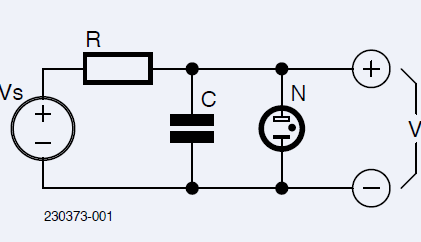
If two electrodes are set up in a glass envelope filled with low-pressure neon or another gas, and sufficient voltage is applied to the electrodes, at some point the gas will ionize, and the gas around the negative electrode (or cathode) will glow — orange for neon, other colors for other gases. They’re called “cold-cathode” devices because the cathode is not heated, unlike thermionic valves (“What’s a valve, daddy?”). From this effect, a multitude of devices have been designed, and I will list a few here.
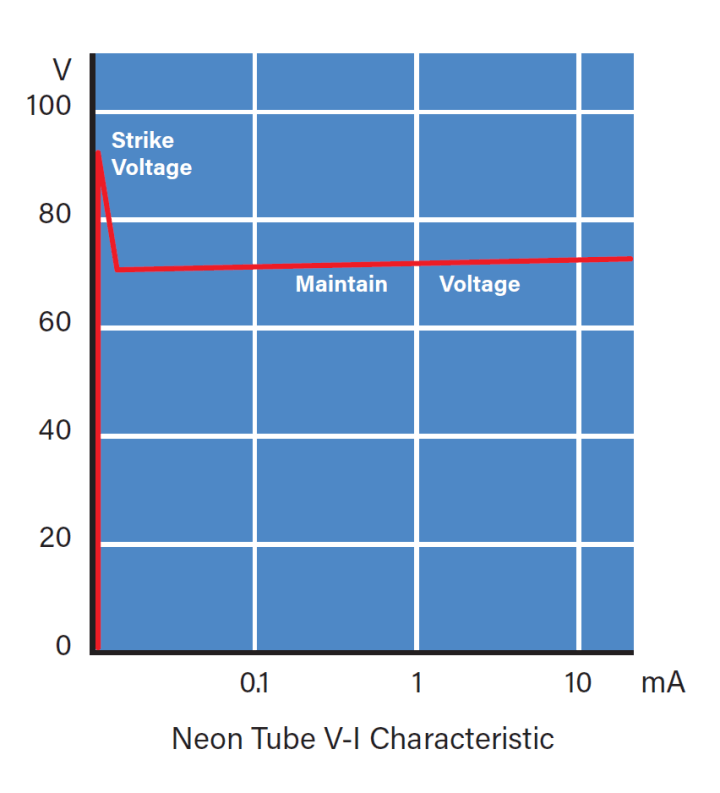
The simplest cold-cathode device is a neon lamp. These (and incandescent bulbs for lower voltages) were the go-to “on” lights in the days before LEDs. They ionize at around 90 V (the “strike” or “breakdown” voltage), and, once ionized, will continue to glow at a voltage of around 65 V (the “maintain” voltage). This difference implies a negative resistance region in the device’s curve (Figure 1) and a relaxation oscillator can be built with a neon lamp, a resistor, and a capacitor (Figure 2).

Also, due to the negative resistance characteristic, if you want to use a neon lamp as a power indicator for AC mains, you need to put a resistor in series with it — commonly 220 kΩ is used at 220 V AC — if the current is not limited, the lamp will have a very short life. Neon lamps have symmetrical electrodes and, when you use them with AC, both electrodes will glow (Figure 3).
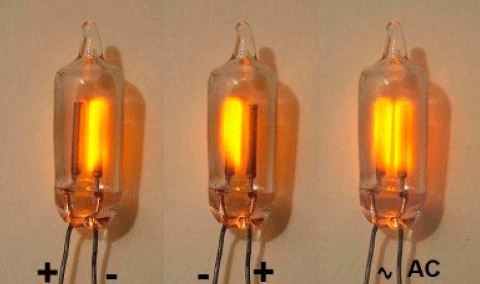
and AC, respectively. Source: Wikimedia Commons
The well-known neon signs seen in places such as Piccadilly Circus and Times Square use the same effect. A shaped tube of neon or other gas is used, sometimes with a small amount of mercury, and various colors can be produced. Still more colors can be produced by applying a fluorescent phosphor coating to the inside of the glass. These long tubes need around 30,000 Volts to strike.
Also from the old valve days are voltage regulator tubes. These were specially constructed neon (usually with other gases) tubes that maintained a very constant voltage across them once they had been “struck.” Popular models were the OA2 (150 V), OB2 (106 V), and 85A2 (85 V). These devices were the valve-era equivalents of Zener diodes. Operating currents varied from 1 to around 40 mA.
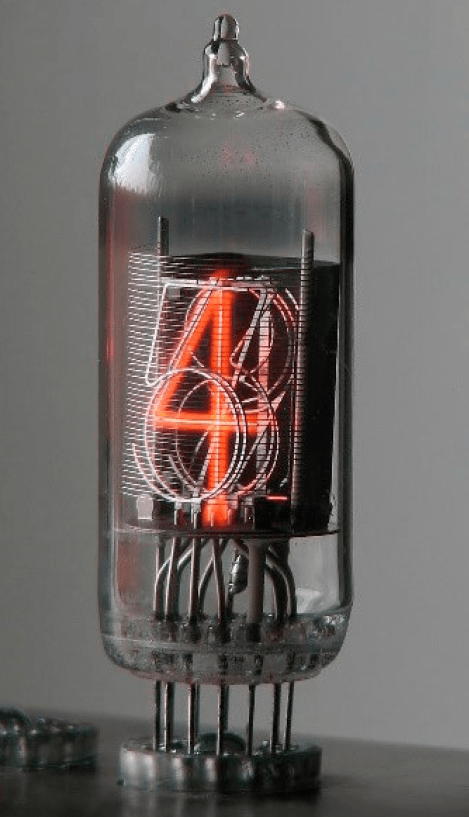
or orange filter is used to enhance contrast. Source: Wikimedia Commons
Still popular these days are Nixie tubes (Figure 4). These precursors to the now-ubiquitous seven-segment displays were just glorified neon tubes, but, with ten cathodes, each formed into the shape of a numeral. They gave very natural-looking displays, and there are those (I included) who find them beautiful and preferable to modern displays.
Also still in widespread use today are flash tubes (Figure 5), used in camera flashes and strobes. These use mainly xenon gas as a filling. They have two main electrodes and a smaller trigger electrode near one or both of the main electrodes. If a few hundred volts is applied to the main electrodes, a high-voltage pulse applied to the trigger electrode causes the gas between the two main electrodes to ionize as well, giving off the bright white flash that we all know and love.
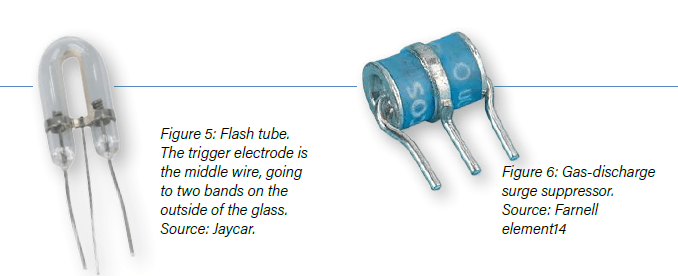
Another widely used device is the gas-discharge surge suppressor (Figure 6). These are two- or three-terminal devices, each consisting of a glass or ceramic tube with an electrode at each end and one in the middle. The middle electrode is usually earthed, and the two outer electrodes connected to, for instance, a telephone line. Any voltage greater than the breakdown voltage will cause the device to strike and limit the voltage, in case of a surge.
There are legions of other cold-cathode devices. Fluorescent lamps usually use a heated cathode, though there are cold-cathode types, notably the ones used for phone display backlights. Mercury‑arc rectifiers were used in days past for power rectification, and thyratrons are the precursor of today’s SCRs. Dekatrons were counter tubes used for divide‑by‑ten counting, long before the 7490 and 4017 were but gleams in their respective inventors’ eyes. But, these devices could (and hopefully will) warrant an article in themselves.
Questions About Cold-Cathode Devices?
If you have technical questions or comments about this article, feel free to contact the Elektor editorial team by email at editor@elektor.com.
This article (230373-01) is part of "Peculiar Parts, the Series" and appears in Elektor November/December 2023.



Discussion (1 comment)
KarolusIV 1 year ago